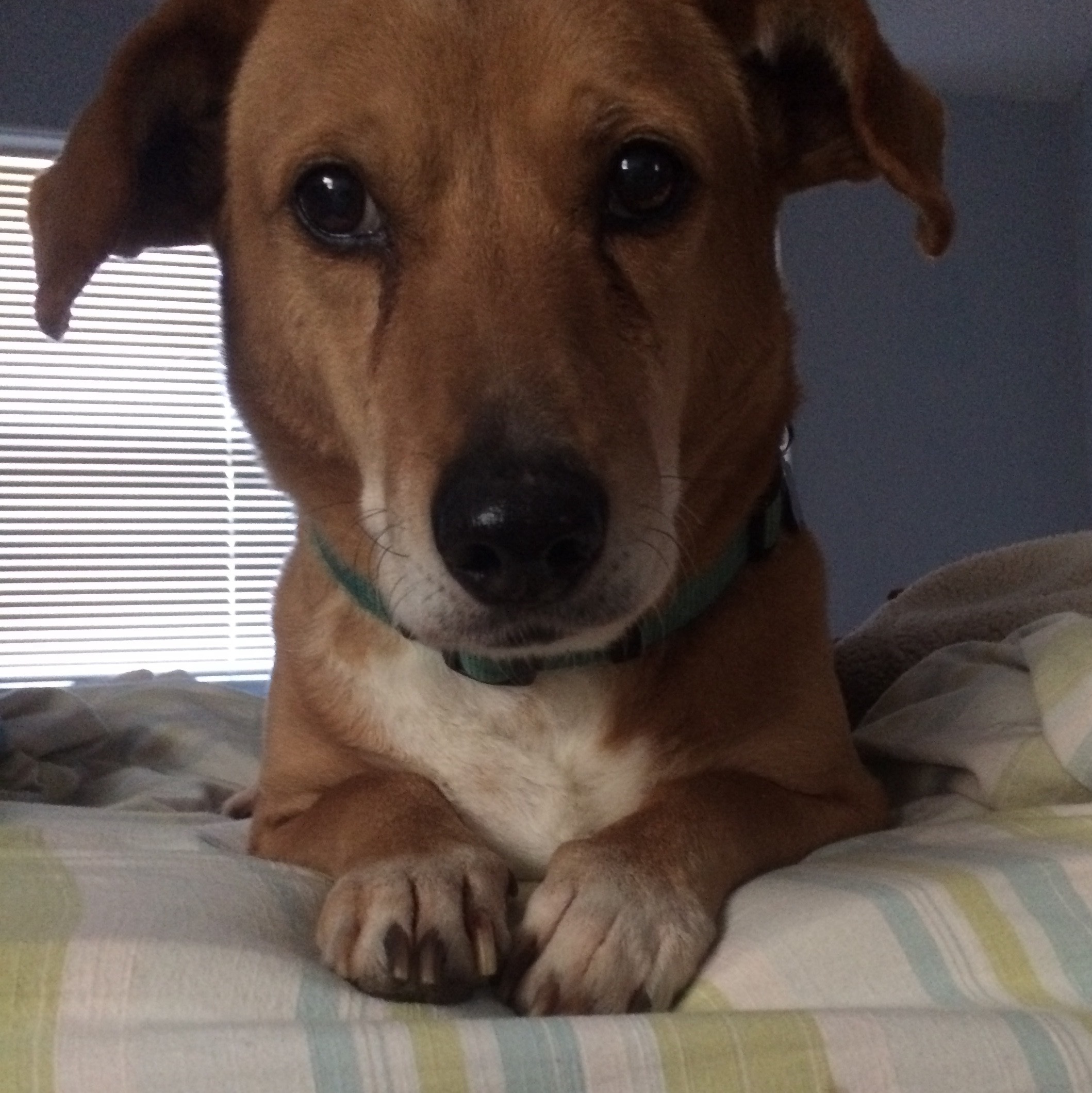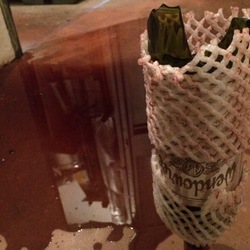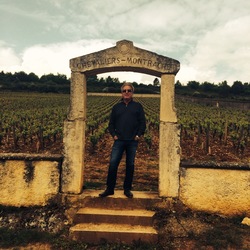Barrel Run Crossing
Tamarack Cellars
Barrel Reserve River Crossing Columbia Valley Cabernet Sauvignon
Outstanding surprise on the road. Highlighted by a local wine store. Not usually a huge Columbia Valley fan, but its really nice for the price. — 2 years ago
Domaine Jean-Louis Chave
Offerus Saint-Joseph Syrah 2017
What a lovely Syrah comes from the north of the Rhône Valley, from my favorite St. Joseph.
🍇The domain extends over the longest river stretch in the north of the Rhône. The nature of the soil is very reminiscent of the neighboring Hermitage: granite, with the addition of sand and gravel, the east-facing slope receives less sunlight than the Hermitage, which results in slightly fewer berries, but it knows how to create competition for the Hermitage, Cote Rotie or Cornas.
🍇It usually doesn't need much time in the bottle compared to Cote-Rotei or Hermitage, and the prices are more affordable, which is why it's a particular favorite of mine.
🍇 It has power, infinite tannins run through it, ripe and delicate, perfect seasoning and lots of harmony. It has character, it has depth, full body, 14% alcohol, it has aromas and flavors of smoke, refined barrel, herbs and lots and lots of red and black fruit, maybe raspberry, maybe black cherry, maybe plum.
🍇The finish is soft, long and caressing.
🍇 Elegant, young, full of life, opened before its time, but I really loved it.
Cheers ! 🌿🥂
(From "Raisins in Facebook- it's all about wine and good people" — 3 years ago
Dr. Konstantin Frank
Margrit Finger Lakes Dry Riesling 2014
Nose has washed lime, dried pineapple, wet river pebbles, citrus blossom, neutral oak barrel and dried Clementine peel.
Palate has candied lemon, grapefruit pith, dry clay-based soil, tangerine juice and moist gravel (crusher-run). Quite round on the palate, rich and enjoyable. Finish runs under a minute. Decanted +60m.
Likely a good life for this bottle, easily held in proper storage until 2028+.
Purchased at the winery in Nov. 2016, $31.
This Riesling is from estate plantings (2008) on Seneca Lake.
Day 4 Update: Nose has dried Clementine peel, cut lemon, chalk and under-ripe peach. Palate has ripe peach, orange zest and tart orange minus the citric acid. Quite fun, it's really drinking great now. Moving from 9.1 to 9.2.
@Delectable Wine Would you please drop the 'Finger Lakes' language out of the wine name please? That info is already listed in the more detailed location information, thanks. — 6 years ago
Knights Bridge
Linville Knights Valley Cabernet Sauvignon 2016
Restrained yet deep aromas of blackcurrant, violet, warm spices, and graphite. On the palate, very fine tannins frame layers of flavors that echo the nose, with a lifted acidity that enhances precision. Silken texture and minerality run through the finish, giving this wine a graceful, composed structure.
From a specific block with sandy loam soil. 100% Cab in 100% new French oak barrel for 20 months. 47 cases produced. This is possibly the best Cab I’ve tasted from Knights Valley. — 7 months ago
Coquard-Loison-Fleurot
Echezeaux Grand Cru Pinot Noir 2022
My continued quest to try as many 2022 Burgundies as possible.
My instincts on this one is it will require more cellaring than the previous other five 22’s.
The nose says, it is in a dumb phase. Not showing much. Muddled, brooding dark fruits, not very distinctive earth and withering dark flowers.
The palate fruits are nice. Juicy, ripe but again not one fruit stands out over all others. Dark cherries, ripe strawberries, some nice blackberries, plum, raspberries with the lightest blue fruit hues. Tannins here but far less pronounced than the previous five wines. Like the others, dusty, dry top soils, limestone powder, dry river stone, black tea, dark rich soil with dry leaves, dry twigs, 65% new oak here but you wouldn’t sense that high of use, so, barrel shavings, lightly grilled meats, dry tobacco & leather, very light baking spices, baking soda/powder, nice, dark spice-not overdone, dry herbs, moist, volcanic clay, withering to dry dark, red flowers, nice acidity with an nicely; balanced, elegant, well made finish that lasts two-minutes that run nice fruit to dry minerals.
Don’t open for ten years. — a year ago



Auteur
Labyrinth Vineyard Pinot Noir 2019
‘Auteur’, meaning, ‘author’ in French, is a micro boutique, family-owned and run winery in Sonoma. The name captures a sense of creativity, artistry, and innovation.
Here’s a flight of the 2019 Gap’s Crown Vineyard Pinot Noir, the 2019 Labyrinth Vineyard Pinot Noir, and Auteur’s inaugural 2018 Nunnery Vineyard Cabernet Sauvignon.
Wow, each of these wines has such a strong sense of self. From a baked black cherry, plum, fruit focused wine (Gap’s Crown) to a more mocha, earthy, inky, spicy wine (Labyrinth), to an herbal, eucalyptus, rose, potpourri, green bell pepper driven wine (Nunnery).
The Pinots come from a clone known for its thick skin (relatively speaking!), which overall lends a deeper hue and more tannin to the structure. These wines are made exclusively from the free run juice.
The Pinots are all fermented in 60% new French oak (medium toast), the Cabernet is just slightly more with 70% new French oak.
The Cabernet was aged for 24 months in the barrel, lending cedar, clove, and cinnamon notes.
These wines are beautiful 😍😍😍
— 5 years ago

Loren Crossing
Napa Valley Cabernet Sauvignon 2023
2023 vintage. Medium body. Dark fruit mated with grip. Good balance with a modicum of richness at the start. Resto cost $15 a bottle on 3 cases. This is easily the most ridiculous, cheap chicken, Napa Cab offer I've come across in a decade. Word in the barrel room is that this is declassified juice from a major Cabernet player/participant that can't be tied into this effort. Tasted their Sauvignon Blanc (and I intently dislike SB) as well and it rocked for a similar price. Approx 5k cases of this Cab made so you might actually come across it. if you do, grab a case. 03.21.25. — 9 months ago
Williams Selyem
Eastside Road Neighbors Pinot Noir 2013
I get why people who generally always review this producer as just good consuming it young. This is ten years from birth, eight years in bottle and it is still not at its peak. it has ten years and perhaps more properly stored. Very good tonight but better things ahead. It takes this long and longer for WS Pinots to shine.
The palate is, juicy, ripe, rich, a bit lush; blackberries, dark cherries, black plum, black raspberries, purple fruits, hues of blueberries, plum and ripe to dry strawberries with a pomegranate overlay. Then, dry earthiness, top soil, crushed rocks & powdery limestone & chalkiness, dark spices, some black pepper, dry brush, eucalyptus, tree sap, sun tea, black and red cola/licorice, drier tobacco, barrel dust to shavings, nutmeg, cinnamon stick, vanilla, touch of dry herbs-bay leaves & sage, bright red, pink, blue, purple florals framed in dark slightly withering florals, rain shower acidity, the finish is; well structured & balanced in fruit, earth & flowers, some more tension than I like but will soften & fade nicely in 3-5 years. But, wire to wire really even and stunning. Evolution & integration is good but needs 3-5 years to be its best. Coravin glass.
IMHO, one of the outstanding CA Pinot producers. Walter Hansel gives them a run for the money at their fantastic price point. — 2 years ago
AXR Napa Valley
Premiere Napa Valley Sleeping Denali Cabernet Sauvignon 2018
One of my favorites from Premiere Napa Valley 2020 #pnv20 #pnv2020 #napa only 5 cases produced. “A blend of 100% Cabernet Sauvignon from two of the best AXR Napa Valley blocks
50% from Sleeping Lady Vineyard in Yountville and 50% from Denali Vineyard in the hills of St. Helena
100% barrel fermented from our finest barrels utilizing native yeast; unfined and unfiltered
Reflection of Jean Hoefliger’s pursuit to create a wine to push the envelope of Cabernet Sauvignon
AXR is a winery that pays homage to the past at their historic estate in St. Helena. AXR, named after the rootstock which succumbed to phylloxera, left the California wine industry a blank canvas. This was a crossing of the past and future of the wine industry as we know it. AXR has given winemaker Jean Hoefliger this same blank canvas. Jean is driven to push the envelope, challenging not only winemaking but life in general. With an insatiable appetite for art, philosophy and good discussion, Jean thrives when his creativity and passion is left unbound by conventional thinking.
Wine Facts
Wine is unfiltered
Single vineyard wine
Sustainably produced — 4 years ago










Freddy R. Troya
Champagne Billecart-Salmon Brut Sous Bois NV
Champagne, France 🇫🇷
Overview
This distinguished cuvée from the esteemed family-run house (est. 1818) earns its name “Sous Bois” (“under wood”) by being fully vinified and aged in oak barrels. The blend features ~34% Chardonnay, 33% Pinot Noir, and 33% Pinot Meunier—a balanced trio that brings both richness and finesse. The oak elevates its texture, resulting in a strikingly layered and structured Champagne that’s a step above the usual non-vintage Brut. 
Aromas & Flavors
Lively orchard fruit like pear, green apple, and citrus mingle with decadent notes of brioche, roasted nuts, vanilla, and a tertiary spice layer from the oak. A mineral undertone provides brightness underneath the creamy, toasty character.  
Mouthfeel
Full-bodied yet refined, with a fine and lingering mousse. The palate feels velvety and textured, balanced by bright acidity and a satisfying, mineral-driven finish.  
Winemaking Notes
Fermentation and aging are conducted entirely in oak barrels at cool temperatures. A portion of the wine includes reserve wines, which contribute depth and consistency. Lees aging ranges from 6 to 7 years. No malolactic fermentation in most lots, preserving freshness and clarity.   
Food Pairing
A versatile and luxurious Champagne—ideal with roasted poultry, creamy shellfish dishes (think lobster or scallops), and earthy mushroom preparations. Works elegantly as both an aperitif and a gastronomic accompaniment.
Verdict
Champagne Billecart-Salmon Brut Sous Bois NV is a masterclass in barrel-fermented Champagne. It blends textural richness with precision and finesse—bold yet balanced, complex yet harmonious. A standout choice when you want something unforgettable and elegant. — 3 months ago